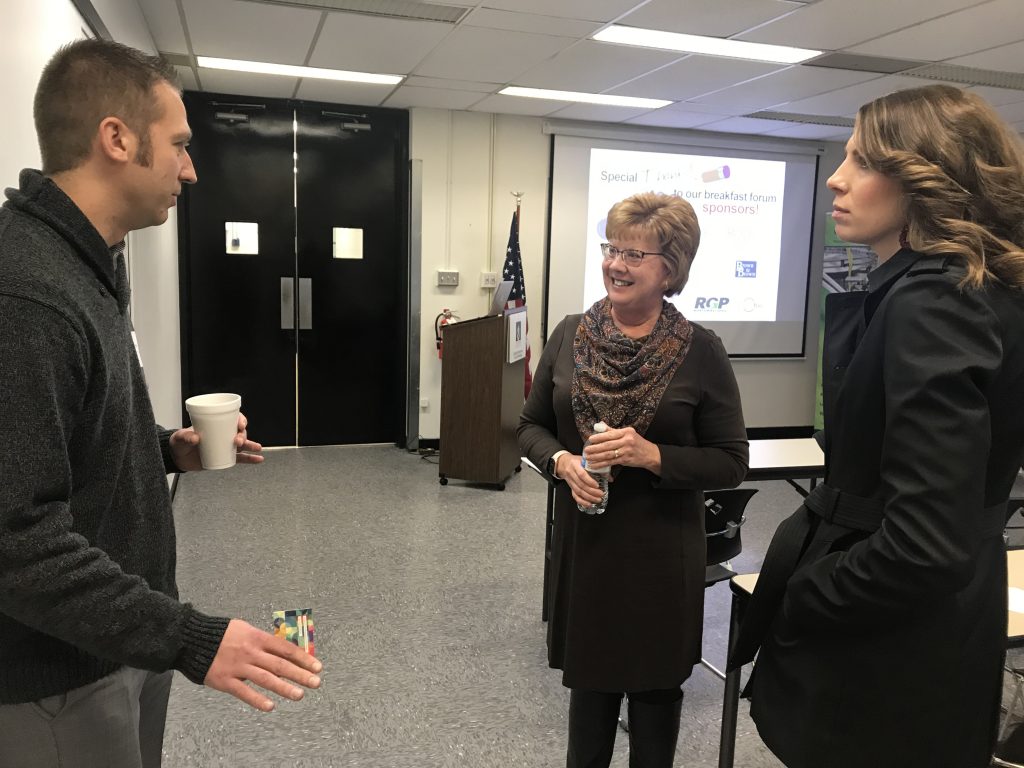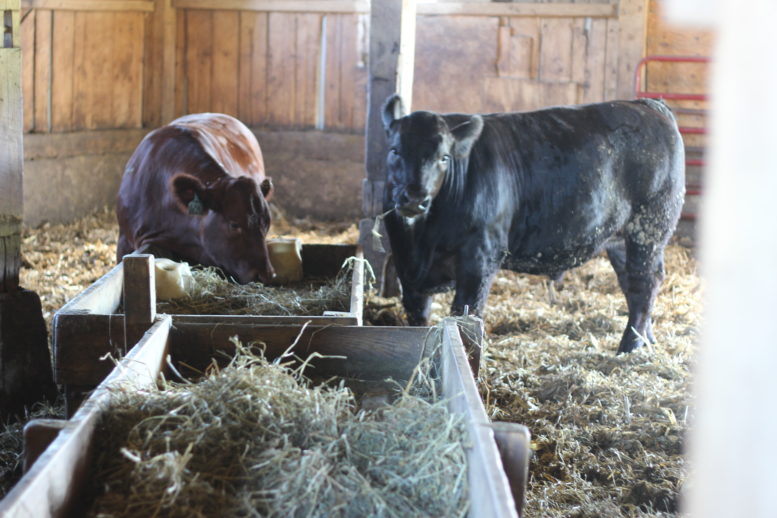By DAVID DUPONT
BG Independent News
Farmers who raise beef have a lot on their plates.
They face concerns about trade, water quality and nutrient management.
“All the things we need to focus on,” said Elizabeth Harsh, a beef industry spokesperson. They’re biggest beef, though, is with “fake meat.”
That’s what prompts the most questions and most debate.
“They don’t want their nomenclature misused,” she told the November ag breakfast gathering.
Harsh is the CEO of the Ohio Beef Council and the Ohio Cattlemen’s Association. The two groups have separate missions, but the ultimate purpose is to work for what’s best for the industry. And the advent of Impossible Burgers, Beyond Meat, and the like are not seen as pluses.

Still, a public survey shows that the beef industry is winning the popularity contest with a majority of those surveyed believing that meat is healthier, and even better for the environment. (The advocates for plant-based meat argue that beef production is a major source of greenhouse gases.)
Through the Cattlemen’s Association, the industry is pushing to make sure there’s “transparency in labeling,” Harsh said.
Some of the plant-based products are high in sodium and have long ingredient lists.
The only ingredient in meat is meat, she said.
The industry knows it’s not going to convert vegans, but it wants to keep those in the middle in the meat-eating fold.
Consumers are sold on beef with consumption increasing 16 percent in the past three years.
The Beef Council continues to keep its finger on he pulse of consumers, Harsh said.
They promote the use of meats through the cultivation of food bloggers who reach older millennials just starting families.
They bring the bloggers out to the Cattlemen Association’s culinary development facility in Colorado and to farms and feedlots so when they blog they are sharing the story of the industry.
They work with those “mommy” bloggers so there’s a steady stream of recipes using a variety of cuts, from cheap to pricey, that have preparations from easy to more involved.
That’s important in a time when fewer and fewer people have direct connections to agriculture.
“There’s a void, a disconnect,” Harsh said. “We want to from the pasture to the plate.”
The strategy includes videos posted that feature farm families that show how much they have in common with consumers.
Farmers are concerned with water quality issues. Beef producers have banded together with other ag groups in the state to form the Ohio Agriculture Conservancy Initiative.
“All ag groups in state work closely together,” she said. “That’s not the case, I’ll tell you, in all the states. But here we have a great relationship.”
They’ve also broadened the constituency for the effort by including environmental groups such as the Ohio Environmental Council, the Nature Conservancy and the Environmental Defense Fund.
“We recognized that to address this issue we needed to work collaboratively,” Harsh said.
The program developed involves two major components.
“We don’t have a baseline to show folks when we’re making improvement,” Harsh said.
So working with researchers and academics, particularly at the Heidelburg Water Quality Center and at Ohio State, random, and confidential assessments of practices farmers are using will be conducted starting early next year.
The intent is to continuing doing these assessments annually.
Also being developed is a voluntary certification program built around a set of the 10 best practices.
These were identified, Harsh said, based on “what they cost to do and the amount of reduction of phosphorus.”
The new H2Ohio program (http://bgindependentmedia.org/ohio-looking-for-help-from-farmers-to-keep-lake-erie-healthy/), she said, now provides the funds to support the certification program. That financial aid was not available before.
Another concern is the emerging threat from black vultures, which can kill cattle, in the southern part of the state, Harsh said.
They had been a problem in the South, but their range is now extending northward.
These are a different species from the turkey vulture seen locally from spring to fall. Because black vultures are migratory birds, she said, they have federal protection limiting what farmers can do to control them.

